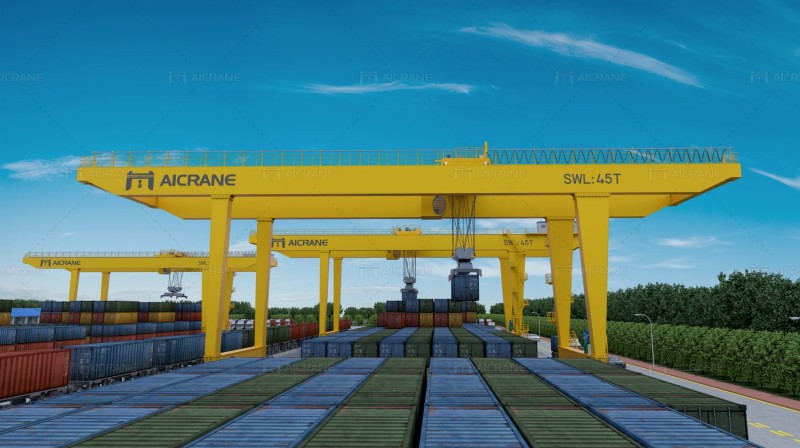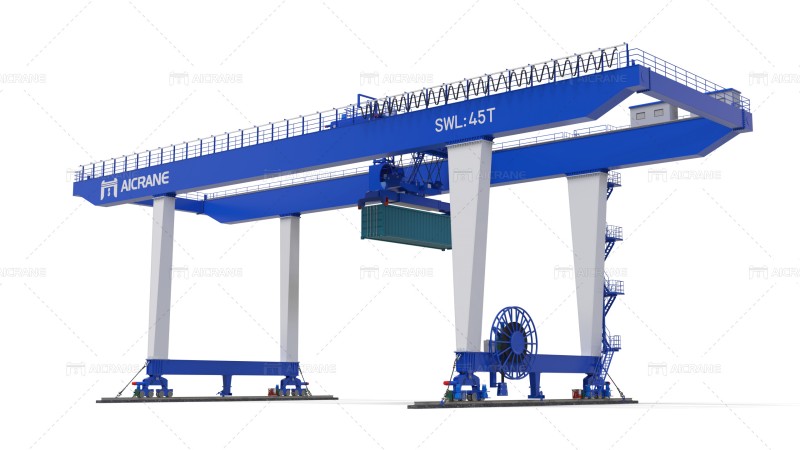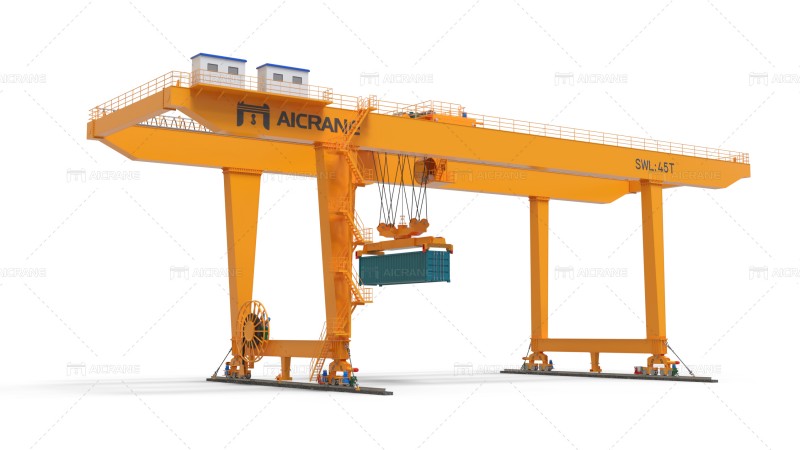Container handling gantry cranes are commonly used in various locations where efficient handling of shipping containers is required. Some of the typical places where container handling gantry cranes are utilized include:
Seaports and Container Terminals: Gantry cranes are extensively used in seaports and container terminals for loading and unloading containers from ships. They are employed to transfer containers between the ship and the yard, stack containers in storage yards, and facilitate container movements within the terminal.
Rail Yards: Container gantry cranes are deployed in rail yards to handle containers during intermodal transportation. They assist in loading and unloading containers onto and from railcars, transferring containers between different trains, and positioning containers for efficient train assembly or disassembly.
Inland Container Depots (ICDs): ICDs are inland facilities connected to seaports by rail or road, serving as hubs for containerized cargo. Container gantry cranes are used in ICDs to handle containers, enabling efficient transshipment and distribution of goods to and from the seaports.

Intermodal Freight Hubs: Gantry cranes are employed in intermodal freight hubs, where different modes of transportation, such as ships, trains, and trucks, converge. They facilitate the transfer of containers between different transportation modes, ensuring smooth and timely cargo movements.
Logistics Centers and Warehouses: Gantry cranes are utilized in large logistics centers and warehouses where containerized goods are stored and distributed. They aid in loading and unloading containers from trucks, organizing container storage areas, and transferring containers within the facility.
Industrial Facilities: Some industrial facilities, such as manufacturing plants or distribution centers, may employ container handling gantry cranes for handling containers. These cranes help with the movement of raw materials, components, or finished goods in containerized form within the facility.
Construction Sites: In large construction projects, container gantry cranes can be utilized for handling construction materials or equipment in containers. They assist in efficiently moving and positioning containers at construction sites, reducing manual labor and improving productivity.
It’s important to note that the specific use of container gantry cranes may vary depending on the requirements and infrastructure of each location. These cranes are designed to handle the specific needs of containerized cargo and play a crucial role in facilitating the global logistics and supply chain industry.

Safety operation of rail mounted container gantry cranes
Safety is of paramount importance when operating rail-mounted container gantry cranes to ensure the well-being of personnel and the efficient handling of containers. Here are some key safety measures to consider:
Operator Training: Ensure that crane operators receive thorough training on the safe operation of rail-mounted gantry cranes. Training should cover crane controls, emergency procedures, load limits, communication protocols, and adherence to safety regulations.
Pre-Operation Checks: Conduct pre-operation checks to verify that the crane is in proper working condition. Inspect components such as brakes, ropes/cables, spreader, safety devices, and control systems. Any defects or abnormalities should be addressed before commencing operations.
Clear Communication: Establish clear communication channels between crane operators and ground personnel. Use hand signals, two-way radios, or other communication devices to relay instructions and ensure safe operations, especially during lifting, maneuvering, and positioning of containers.
Load Capacity Limits: Adhere to the crane’s load capacity limits and ensure that containers being lifted do not exceed the crane’s specified capacity. Overloading can compromise the crane’s stability and lead to accidents. Be aware of the load ratings and follow safe lifting practices.
Secure Container Connections: Properly attach the spreader to the container’s corner castings to ensure a secure grip. Verify that the connections are secure before lifting or moving the container. Loose or improperly attached containers can lead to accidents or dropped loads.

Clear Operating Areas: Ensure that the rail tracks, working areas, and container storage areas are clear of obstacles, debris, or personnel. Maintain clear visibility and be cautious of any potential hazards in the vicinity of the crane’s operations.
Safe Lifting and Lowering: Use smooth and controlled movements when lifting, lowering, and maneuvering containers. Avoid sudden movements or excessive speeds that can cause swinging or instability. Ensure that the container is properly aligned before lowering it to its destination.
Emergency Stop Procedures: Familiarize crane operators with emergency stop procedures and ensure that emergency stop buttons are easily accessible. In the event of an emergency or unsafe situation, operators should be able to stop crane operations immediately.
Weather Conditions: Monitor weather conditions, especially during strong winds, storms, or adverse weather events. Crane operations may need to be halted or modified to ensure the safety of personnel and prevent accidents caused by high winds or unstable conditions.
Maintenance and Inspections: Regularly inspect and maintain the crane according to the manufacturer’s recommendations. Follow the prescribed maintenance schedules to address any mechanical or electrical issues promptly. Proper maintenance ensures that the crane operates safely and reliably.
It’s important to note that these guidelines provide a general overview of safety measures for rail-mounted container gantry cranes. Always follow the specific safety procedures and guidelines provided by the crane manufacturer and adhere to local regulations and industry best practices to ensure safe crane operations.
